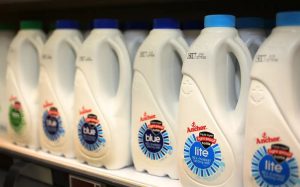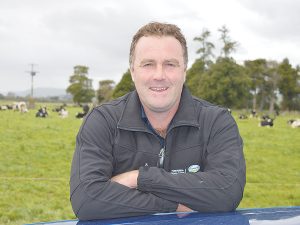
Previously called Town Milk, the industry was deregulated in the early 1990s, removing the NZ Milk Board’s control of the milk price setting, and shifted it to individual processors.
As a result, winter milk contracts were offered with lower premiums but even today, for those autumn calving farms, the winter milk premium on offer provides a boost to farm income.
Massey University Masters graduate Jake Jarman studied autumn calving for his thesis and says “recent changes to the winter milk premium payment structure has increased farmer interest in changing to an autumn-calving system”.
“Increasing local and international demand for fresh dairy products, like ultra-heat-treated milk and cream in China for example, has led to processors requiring greater quantities of fresh milk during the traditionally minimal winter supply period.”
Climate change, the winter milk premium, as well as potentially other factors may be the reason a farmer decides to change spring calving to autumn.
For example, matching feed supply to demand can be challenge for spring calving farmers in some regions where hot dry conditions lead to pasture growth stalling.
In an autumn calving system, the herd is dry during the hot dry summer months and the demand for feed is not as high.
However, despite the benefits of calving cows in warm sunshine with less mud, less mastitis and on firmer ground, the quality of pasture often lower than spring pasture and supplementary feed may need to be used early lactation.
“In many cases, autumn-calving systems may require supplementary feed during early lactation to fill feed deficits as a result of declining pasture growth rates,” Jarman says.
“In contrast, spring-calving systems may require supplementary feed in late lactation to fill feed deficits.
Jarman’s studies found the greater need for supplementary feed can increase the cost of production and the success of changing to autumn calving can be influenced by what existing supplementary feeding infrastructure the farmer has. For example, feed pads can reduce wastage.
DairyNZ farm systems specialist Chris Glassey says there are three common approaches to transitioning to autumn calving we are aware of farmers taking. These are:
1 Selling the spring-calving herd and buying an autumn-calving herd
2 Gradually transitioning cows to autumn-calving over a number of seasons. In essence the farm is operated like a split-calving farm for a number of seasons
3 Complete a whole herd transition across two seasons.
For options 2 and 3, extended lactations occur.
From a farm management perspective, achieving any of the three approaches above requires three main on-farm decisions to be made to initiate the change:
1 Decide to sell the current herd, and decide when to sell them and when to receive the new herd
2 For the replacement heifers decide either mate them earlier than normal or delay their mating
3 For the current milking herd decide either mate them earlier than normal or delay their mating
Each farm is different and farmers are choosing to adopt different combinations of the six options above.
There also needs to be careful financial planning and forecasting undertaken as the transition cost to autumn calving can be significant. These costs can include lost income from reduced milk production and increased feed costs and the potential extra cost of purchasing autumn calving cows.
There also needs to be a detailed examination of the farm’s suitability to produce winter milk. This includes looking at issues like the local climatic conditions and soil suitability for winter milking.
“Changing calving season from spring to autumn represents a significant systems-level change to a farm, which impacts on its’ biophysical and economic performance,” Jarman says.
“It also represents an investment that has potential short-term net costs that must be offset by potential long-term net gains. Farmers utilising an extended lactation to change calving season must understand how the transition period will impact on their farm business in both the short and long term, what factors, benefits, and challenges they need to be aware of, and how their unique farm attributes may, or may not, influence these.”
























